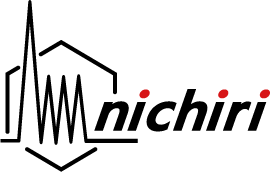*About the NDMA detection system
We have developed a new N-nitrosodimethylamine (NDMA) detection system, based on the research results of Associate Professor Hitoshi Kodamatani of the Graduate School of Science and Engineering at Kagoshima University. The presence of NDMA, a carcinogenic N-nitrosamine, in pharmaceuticals and reclaimed water sites, is currently a worldwide problem.
The developed system utilizes HPLCs for luminol chemiluminescence detection, making it easier to obtain ultra-sensitive detection results at several ng/L of NDMA, eliminating the need for the concentration process.
Among the system features are the following.
- The limit of quantitation of N-nitrosoamines is several ng/L (including N-nitrosodiethanolamine (NDELA), NDMA, N-nitrosomorpholine (NMOR), N-nitrosodiethylamine (NDEA), N-nitrosopyrrolidine (NPYR)).
- There is no need for the concentration process.
- The sample volume (per inspection) is only 1 mL.
- The inspection time (per inspection) is only 20 minutes.
The system was shown to be highly useful in the joint study, “Utility Validation of an Alternative Method for NDMA Analysis Requiring Less Time, Cost, and Sample Volume (Water Environment and Reuse Foundation)”, conducted by Dr. Megan Plumlee of the Orange County Water District (OCWD, CA, USA), which has the world’s largest advanced sewage treatment plant, along with Associate Professor Takahiro Fujioka of the Nagasaki University Graduate School of Engineering, and Associate Professor Hitoshi Kodamatani.
However, the system is still not widely known. Thus, as we would like to demonstrate the advantages of the system to a wide audience, we have established an N-nitrosamine sample analysis service, with the following structure.
Schedule
- Step 1: Contact Us
- Water (tap, ground, well, other)
- Alcoholic beverage (beer, sake, wine, etc.)
- Medicine (tablet, powder, liquid, other)
- Cosmetic products
- Processed foods
- Household product (hygiene product, detergent, oral care product, toiletry, baby product, nursing product, DIY product, pet product, stationery, car product, gardening product, etc.)
- Other
- Step 2: Sample analysis
- Step 3: Quotation
- Step 4: Order & Payment
- Step 5: Inspection
- Step 6: Inspection Data and Delivery
*Data on the Measurement of Samples Containing n-nitroso Compounds
The links below will take you to examples of analyzes we have carried out.


- Notes
- Your samples will not be returned.
- Any freight charges and duties must be paid by the customer.
- If you choose to use our service, please inform us of any detection methods or materials that you have used to inspect your sample/s (e.g., extraction solvents/methods, dissolution solvents/methods, hydrophilic/hydrophobic properties, chemical components that may be contained in the sample/s, etc.).
- Anything that is contrary to the laws of Japan cannot be inspected.
- If you send a product from abroad to our address in Japan, please send us the INVOICE, CAS number, HS code and Material Safety Data Sheet (MSDS:MATERIAL SAFETY DATA SHEET) in advance.

 日本語(Japanese)
日本語(Japanese)  English
English